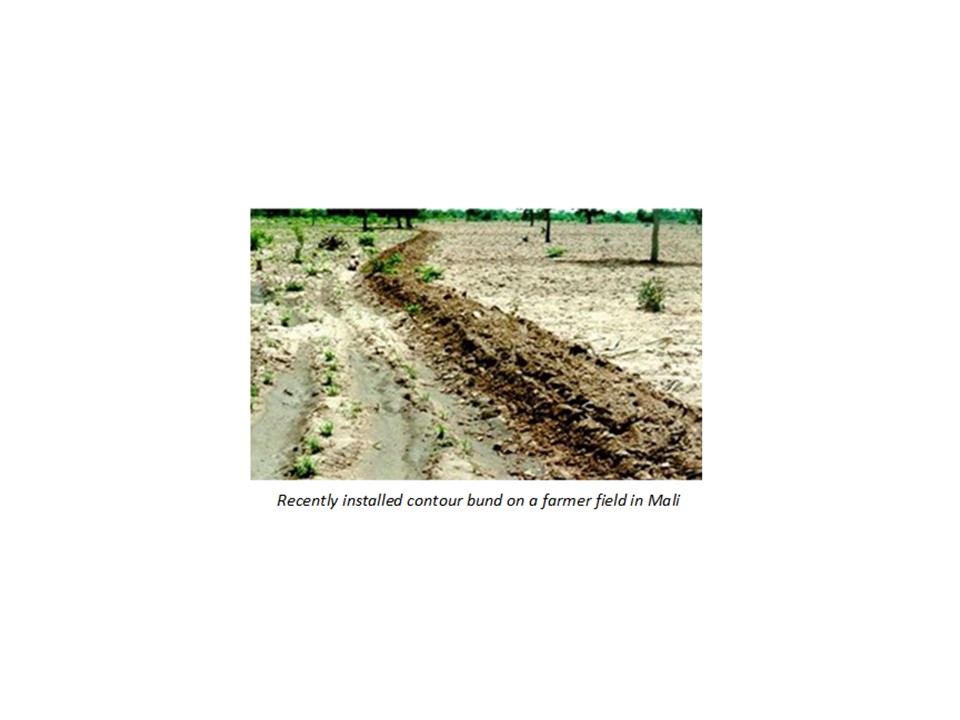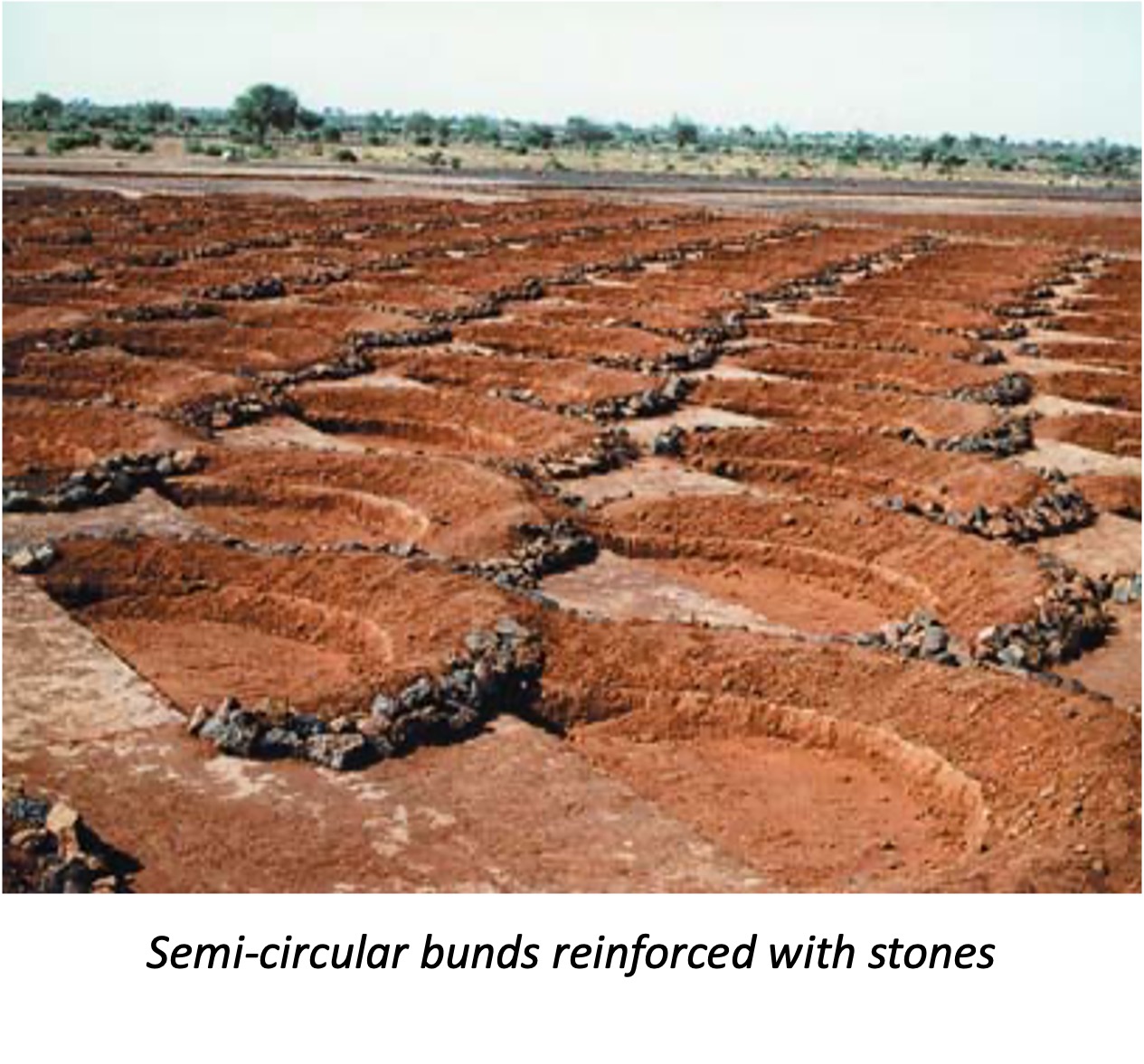Contour Bunds for Water Harvesting
Summary
Availability of water is one of the main constraints to dryland agriculture, and recent declines in rainfall and changes of precipitation patterns caused by climate change severely jeopardize food security. To enhance yields and resilience of crops across Africa’s semi-arid areas, it is of major importance that soils intercept maximum available rainwater, and that surface runoff is minimized. Contour Bunding Technique (CBT) involves short walls that are arranged in specific patterns along the field contour, creating micro-catchments. Bund structures intercept runoff and increase rainfall capture, water storage, and deep infiltration, and reduce soil erosion and gully formation. Planting trees on top of the bunds permanently marks and reinforce them, help to improve soil fertility, and can provide quality forage for animal feed when using agroforestry species that have high fodder yield and nutritive value. CBT keeps the soil moist for longer which extend the window for field preparation and planting by 7-10 days. The harvesting of water results into higher grain yield of sorghum and millet, and substantially reduces soil erosion.
About the Solution
A majority of soils across African drylands do not effectively store rainwater for crops and too often exhibit high levels of surface runoff and soil erosion. Constructing sequences of parallel bunds along the soil contour lines of farmland allows capture of water and creates slow infiltration areas and safer drainage of excess runoff. Some bunds have a parabolic shape, so rainwater is distributed toward the center. Soil inside the bunds must be evenly levelled, otherwise water will stagnate at the lowest point and damage crops. Planting trees on top of bunds or perpendicular ties extends the performance of the CBT and its benefits for crop production and better resists the heavy downpours that could otherwise wash away the water harvesting structures.
Applying CBT is most pertinent in farming systems of the semi-arid drylands but is also suitable for wetter areas. In places or seasons with low rainfall, CBT helps to harvest water and increase availability of moisture for crops. In places or seasons with high rainfall, CBT helps to reduce the runoff and erosion, and risks of flooding downstream. Two types of micro-catchment structures exist, contour bunds (or contour ridges) and semi-circular bunds, and the choice between these depends upon topography and socio-cultural contexts. Installing and maintaining contour bunds is most effective at larger scale through coordinated action among neighboring farmers. Semi-circular bunds can be used at smaller scale for individual fields and are staggered along the contour lines of fields with the bow pointing down the slope. The space between bunds depends on the topography of a field, the steeper the slope, the closer together the contour bunds. Contour bunds are appropriate for terrains with a low uniform slope (<5%) and gentle, even runoff. Semi-circular bunds are used on fields that have a higher slope (>5%) and uneven surface where runoff flows are strong and irregular.
Where rock material is abundantly available, bunds can be reinforced with stone, making them more stable and requiring less maintenance. Where rock material is limited, bunds can be made of soil ridges that usually require annual maintenance. The correct placement of CBT is critical and lines of equal elevation within a field can be identified by a technician using a laser level tripod, or a farmer with an A-frame or water/spirit level. Demarcating the contours requires about 50 stakes per hectare. Ridges may also be formed using draught animals. A range of fast-growing agroforestry species can be planted on top of soil bunds as reinforcement, the most common ones being nitrogen-fixing forage trees such as gliricidia and leucaena.
The first step of installing bunds is a joint field visit by farmers and an experienced technician to understand the direction of slopes, the movement of water, farmer’s practices, community bylaws and relationships between neighbors. In this way, unwanted water drainage is avoided and synergies for collaboration are created. The second step is to identify contour lines with land surveying tools and demarcate this with temporary markers. Next, bunds can be constructed by hand or with an ox-drawn plough. Three or four passes of a plow are needed for heaping soil to form a sufficiently tall bund (e.g., 50-80 cm). The standard distance between bunds is 50 m if the slope is less than 1.6% and is 20-30 m when the slope is between 1.6% and 5%. Seedlings of fast-growing trees to reinforce bund may be planted at a spacing of 3 meters on the crest. Bunds made of soil need to be regularly maintained and strengthened using a plough or hand hoe.
Commercialization
Commercially available
Solution Images
Institutions




